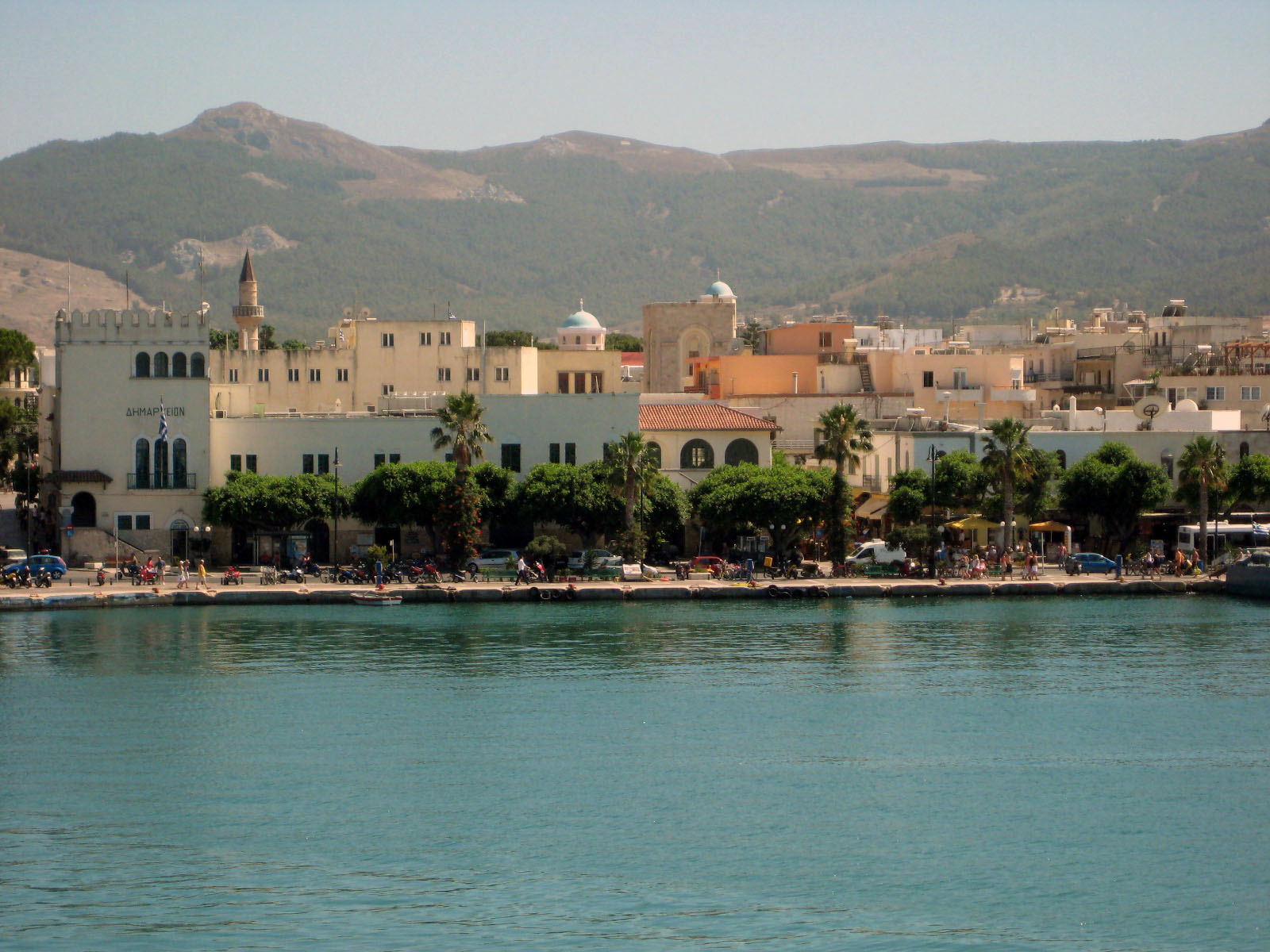 Kos Island, Greece is a one hour ride on the ferry from Bodrum, Turkey. Of course that doesn’t include the 75 minutes it takes to go through four passport inspections (3 in Turkey and 1 more in Greece). But if you’re in Bodrum (like we were) it’s a lot easier than flying back to Istanbul, and transferring to another airline. Once you do get on the ferry it’s really very relaxing.
Kos Island, Greece is a one hour ride on the ferry from Bodrum, Turkey. Of course that doesn’t include the 75 minutes it takes to go through four passport inspections (3 in Turkey and 1 more in Greece). But if you’re in Bodrum (like we were) it’s a lot easier than flying back to Istanbul, and transferring to another airline. Once you do get on the ferry it’s really very relaxing.
Kos is one of the larger islands of the Dodecanese chain. Rhodes is the most famous, but Kos gets it’s share of tourists, especially German families (as we found out).
This island was once known as Nymphaion for it’s nymphs, but these days the only reference to Nymphaion is the 3rd century Vespassiani (public urinal) outside the old bathhouse in the old town. We looked but never found it.
If you’re looking for one of those cute little Greek islands with white washed Greek churches and simple island houses, this is not one of them. Like many other places in the Aegean, Kos was knocked down by earthquakes a bunch of times. The Crusading Knights of St John fortified the island from 1315 to 1522, but a massive quake in 1933 destroyed most of it.
What we’ve been looking at is a charming collection of 20th century Italian Art Deco buildings along the central squares of Kos Town and a lot 1950’s, two story Greek boxy-style apartments and houses.
 We’re staying at one of the newer hotels in Psiladi, about 4km from Kos Town. It’s close enough yet too far to walk in the 100°F heat. The internet photos of the Kos Imperial Hotel show a contemporary, relaxing and romantic hotel along a beautiful beach. The website noted that they did offer many family services, but we had no idea what we were in for.
We’re staying at one of the newer hotels in Psiladi, about 4km from Kos Town. It’s close enough yet too far to walk in the 100°F heat. The internet photos of the Kos Imperial Hotel show a contemporary, relaxing and romantic hotel along a beautiful beach. The website noted that they did offer many family services, but we had no idea what we were in for.
The lobby has the quiet minimal appearance of an Asian beach resort. When we arrived around 11am, the beautiful hotel staff smiled and told us they would be able to upgrade us to a much nicer room. Excellent. Our room overlooks the beautiful Psiladi beach with hundreds of umbrellas, beach chairs and a volleyball court.
Not so excellent. On the other side of us are 4 swimming pools filled with screaming German children. We’ve arrived to Kamp Kos, Greece’s version of a luxury cruise ship that never goes anywhere.
In the morning there is the breakfast buffet, followed by all day snacks buffet lunch served by the pool. And at night the “all you can eat” dinner buffet.
I think we’re the only Americans here. There are a few Brits and Russians, and some languages we can’t quite make out, but most of the families here are German.
The pool takes up most of the time for the kids. The older people go to the beach. There are supervised nature walks every morning, organized exercise groups, wind surfing lessons at 10am, Volleyball starts at 4pm and then every night a new musical romp through the worst songs from the 80’s. Family disco is every night from 8pm-9pm, followed by the evening entertainment, usually more disco, only louder. Our room is about 500 meters from the disco stage. Yes, we traded the moaning Imam of Turkey for the bad disco of Greece.
The sun is hot and although we hadn’t planned to be in the midst of a family holiday, the people watching is fantastic (especially the kids). We join in for the morning buffet, a good selection of breakfast foods and lots of delicious thick greek yogurt. A short 10 minutes walk down the road is a really great Greek Taverna, and instead of following the herd to the grand dinner buffet, we relaxed and enjoyed a few really good taverna meals of greek salad, keftedes (meatballs), mousaka and garlic bread. The waiters occasionally danced the steps of a Greek Syrtos, the electricity failed three times and the beer was really cold. On our second night to the Taverna we asked for the octopus. The owner of the restaurant looked down for a minute and then said, “They scrape the octopus along the concrete, then they pick it up and smash it again to the ground and then let it sit in the hot sun for a whole day before it is grilled. Maybe you would prefer the kalamaria?” And so we ordered the calamari.
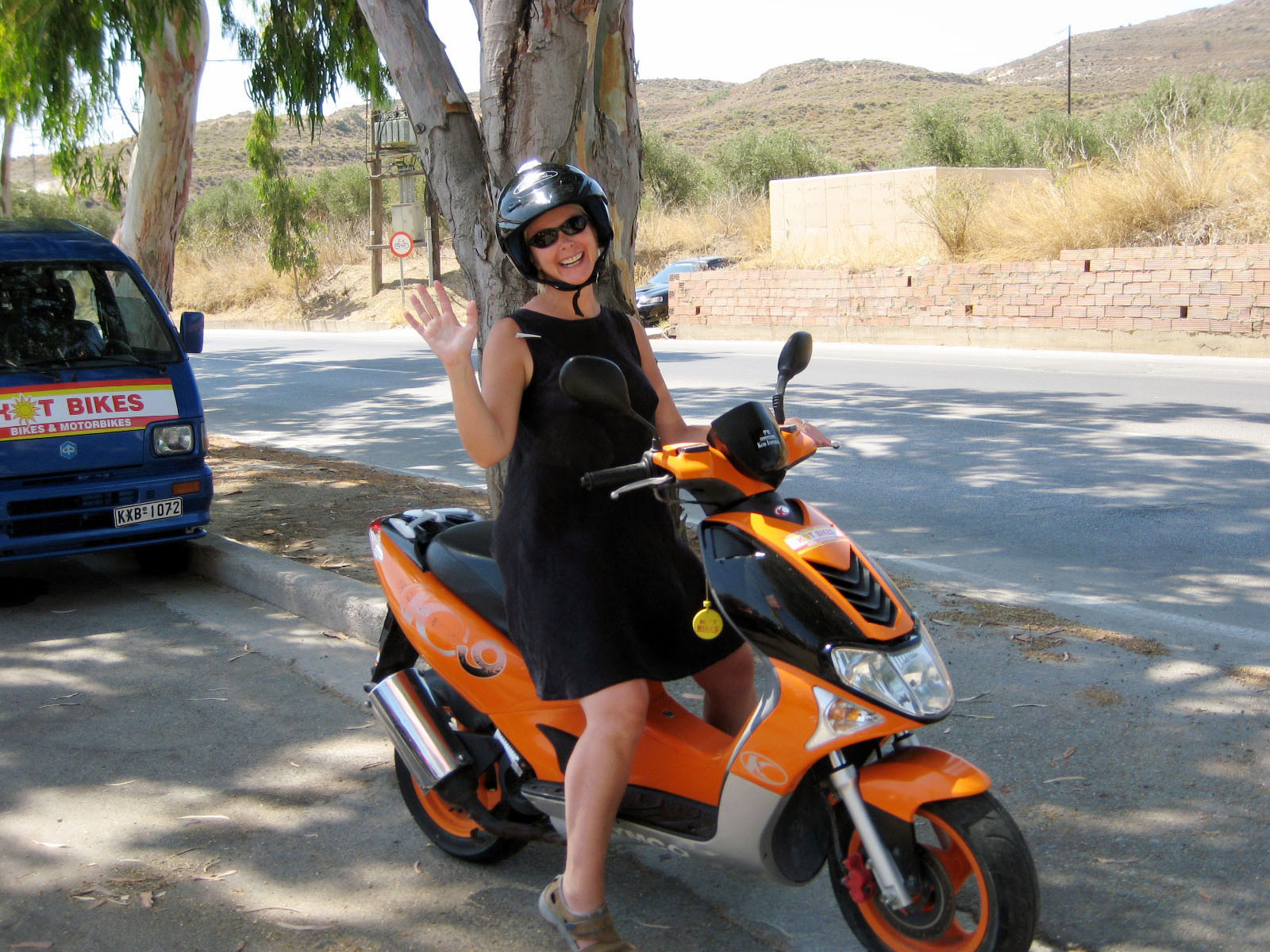 We’ve rented a couple of 80cc motorbikes and headed out to the Asklepeion. Asklepios is the god of medicine and healing and the symbol of the cult of Asklepios is a snake wrapped around a staff, the same symbol still used today by the medical profession.
We’ve rented a couple of 80cc motorbikes and headed out to the Asklepeion. Asklepios is the god of medicine and healing and the symbol of the cult of Asklepios is a snake wrapped around a staff, the same symbol still used today by the medical profession.
The cult of Asklepios recommended fresh air, clean water, herbs, hallucinogens and the power of suggestion to cure ailments. I guess things haven’t really changed that much.
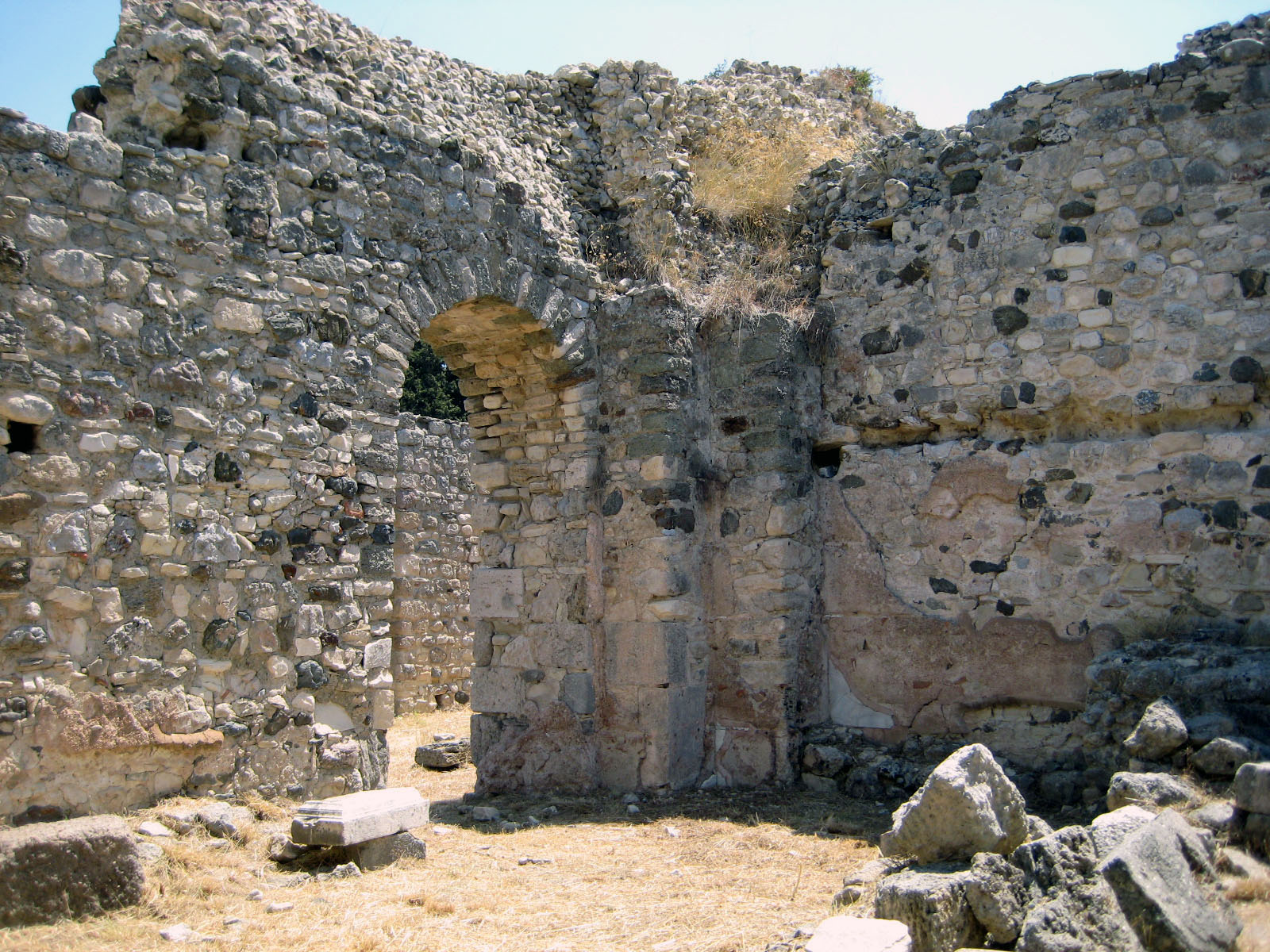 Hippocrates, the Father of Medicine, and founder of the first school of medicine, was born in Kos and set up his school and hospital at the Asklepeion of Kos. He was also the first physician to separate medicine from religion, claiming illnesses were not caused by supernatural beliefs or punishment from the gods, but instead as a result of bad diets and bad living habits.
Hippocrates, the Father of Medicine, and founder of the first school of medicine, was born in Kos and set up his school and hospital at the Asklepeion of Kos. He was also the first physician to separate medicine from religion, claiming illnesses were not caused by supernatural beliefs or punishment from the gods, but instead as a result of bad diets and bad living habits.
After his death in 357 BC (some say he lived to be over 100), his followers enlarged the Asklepeion. At it’s height, this Asklepeion was administering medical aid to thousands of people from all parts of the Mediterranean.
Hippocrates’ school was primarily based on passive treatments. He believed illness was the result of an imbalance in the body of the four fluids; blood, black bile, yellow bile and phlegm. When they were out of balance a person would get sick.
Although there were many legitimately sick people coming to the Asklepeion for treatment, there were, apparently, a lot of others just trying to get out of work or a few days off from soldiering. Hippocrates (and his staff) measured a persons pulse while taking their case history to see if the patient was lying.
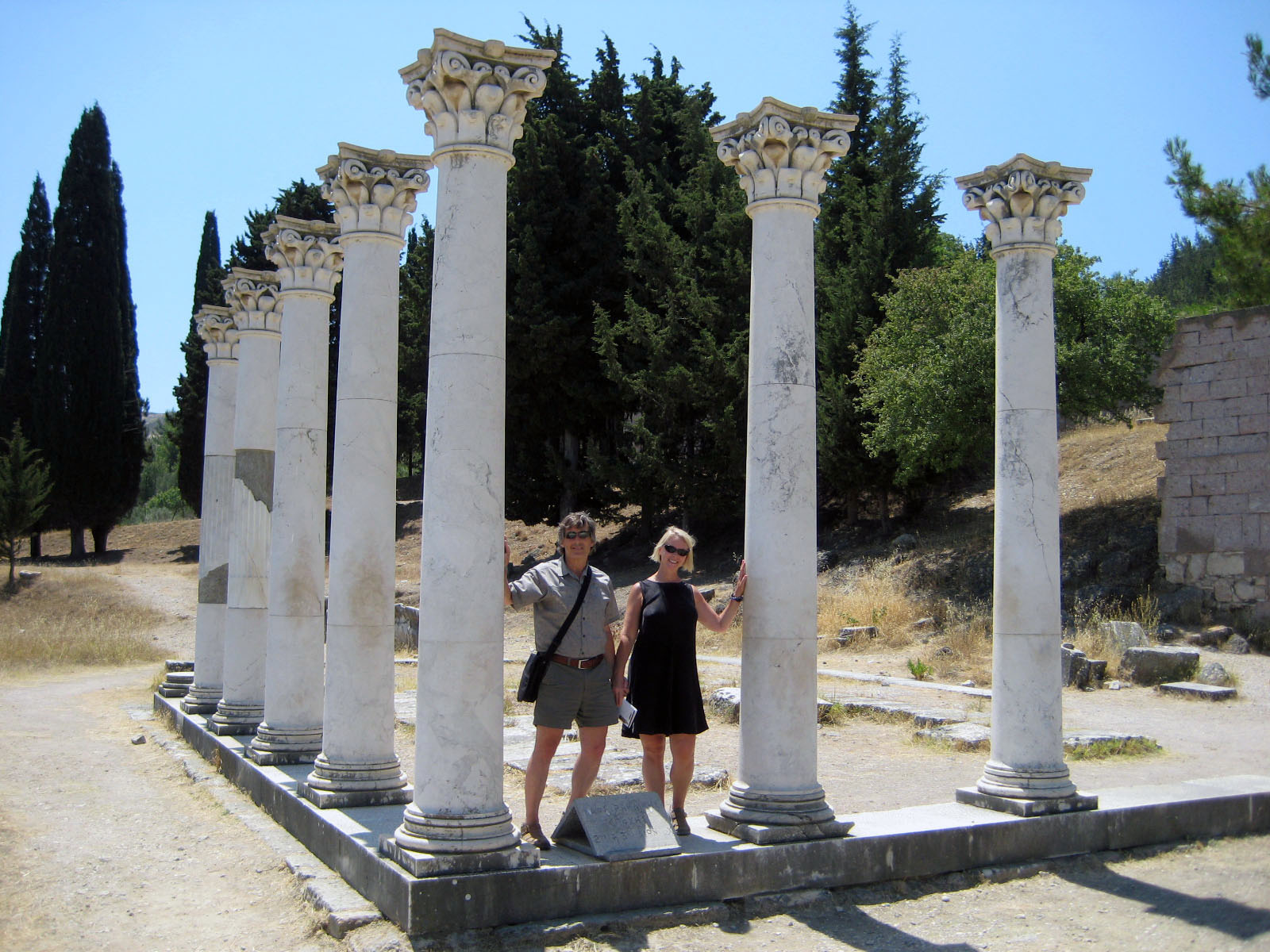 Hippocrates was also the first known surgeon of western medicine. There was no study of anatomy during his life and dissection was forbidden by the Greeks, but Hippocrates was successful quite a few operations. Some of the practices he used are still in use today, only with better instruments. Although most of his beliefs were very secular, Hippocrates was a devout follower of the Gods and there were quite a few temples constructed throughout the hospital, the largest to Athena, the goddess of wisdom, inspiration and skill. The columns of the Temple to Athena are still upright in the ancient Asklepeion.
Hippocrates was also the first known surgeon of western medicine. There was no study of anatomy during his life and dissection was forbidden by the Greeks, but Hippocrates was successful quite a few operations. Some of the practices he used are still in use today, only with better instruments. Although most of his beliefs were very secular, Hippocrates was a devout follower of the Gods and there were quite a few temples constructed throughout the hospital, the largest to Athena, the goddess of wisdom, inspiration and skill. The columns of the Temple to Athena are still upright in the ancient Asklepeion.
Another great physician born on Kos was Stertinius Xenophon, the personal physician to Roman emperor Claudius. However, in 54 AD, Xenophon murdered the emperor by sticking a poison feather down his throat. So much for the Hippocratic oath.
The five rings of the Olympic games supposedly symbolize the Hippocratic philosophy; life is short, science is long, opportunity is elusive, experiment is dangerous, judgement is difficult.
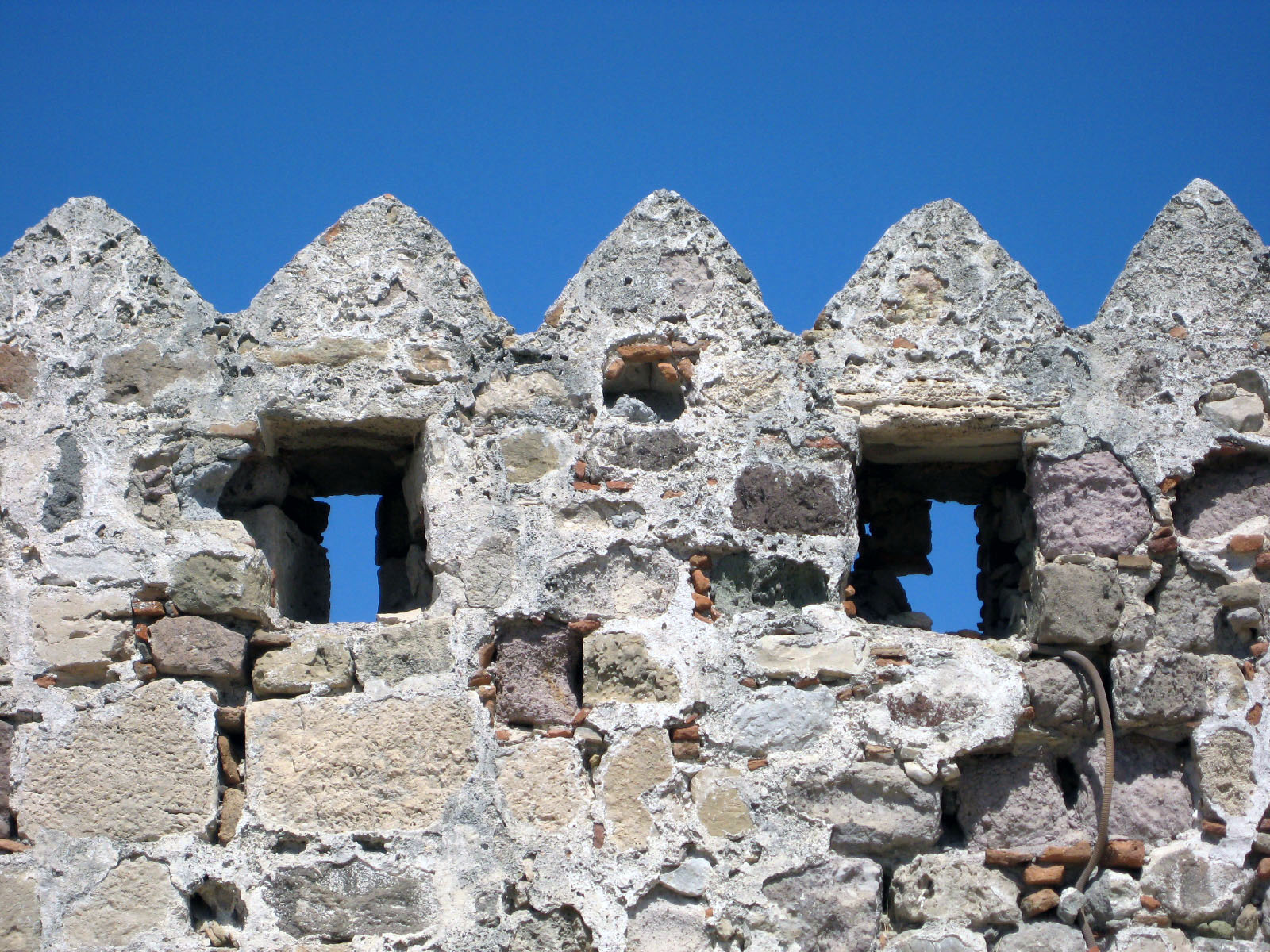 In 1315, the Knights of St John of Rhodes bought Kos from the Venetians, built the Harbor castle and rebuilt the earthquake damaged city. Building materials were lying all over the island from ancient agoras, Roman villas, an old cities; even the Asklepeion was dismantled and used to build the fortress. A second fortress was built further inland (near the airport) now called the Castle of Antmácheia. This one was used as a prison for the bad Knights of St John from the mid 1300’s till 1523. Based on the facts that these Knights were known for pillaging, murder, and a list of other crimes, we’re wondering what was considered to be “bad”? What did they do to be locked up into the Castle of Antmácheia?
In 1315, the Knights of St John of Rhodes bought Kos from the Venetians, built the Harbor castle and rebuilt the earthquake damaged city. Building materials were lying all over the island from ancient agoras, Roman villas, an old cities; even the Asklepeion was dismantled and used to build the fortress. A second fortress was built further inland (near the airport) now called the Castle of Antmácheia. This one was used as a prison for the bad Knights of St John from the mid 1300’s till 1523. Based on the facts that these Knights were known for pillaging, murder, and a list of other crimes, we’re wondering what was considered to be “bad”? What did they do to be locked up into the Castle of Antmácheia?
Not much is left of of either fortress. The 1933 earthquake was pretty devastating. The walls have been repaired along the Harbor Fortress. It’s a beautiful walk and a great view of the harbor.
In 1523, the Turks conquered the island. This was the same time they took possession of Rhodes and Bodrum. It was a good year for Suleiman the Magnificent and a bad year for the Knights of St John.
The Turks held control of Kos till 1912. There are still a number of old mosques and minarets in the city and quite a few Muslim residents. Kos didn’t become fully Greek again till 1948.
Pingback: Rome on Rome » 2009 – Athens; the Acropolis Museum and a trip to Hydra